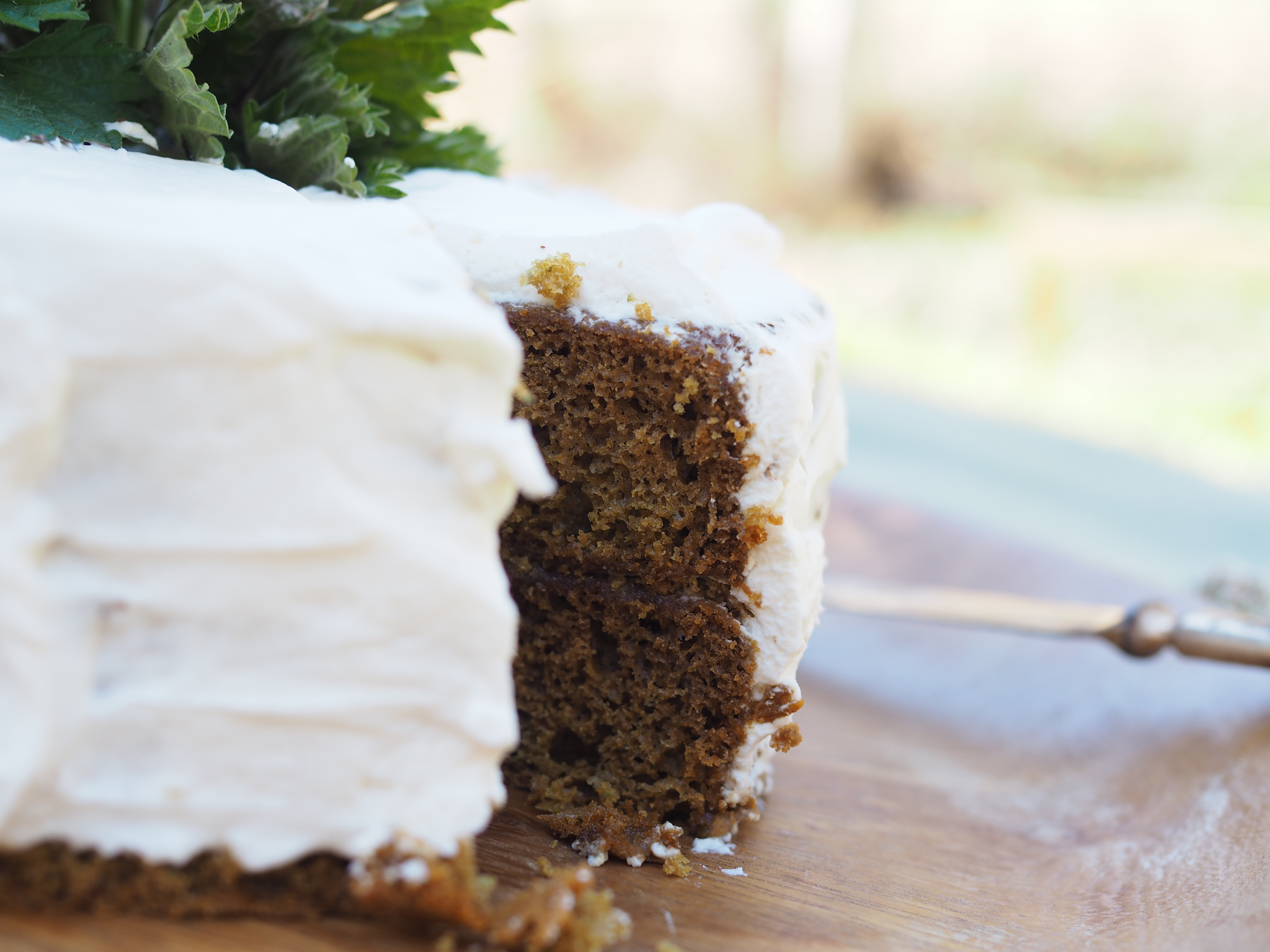
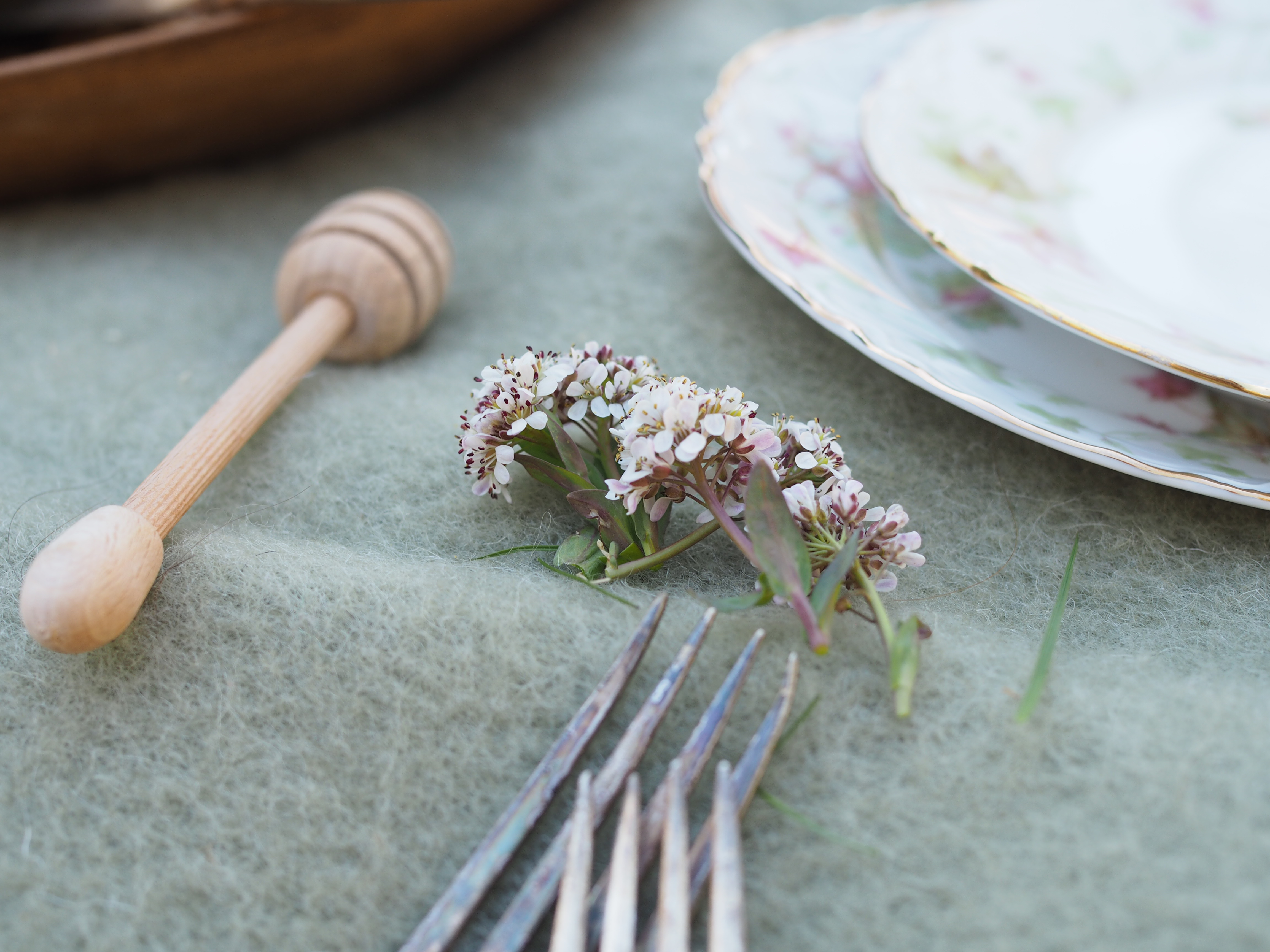 Sprouts of stinging nettles and wood nettles (brennesle) have unearthed across our farm following an indecisive spring which left plenty of water and a sudden transition from frosty earth to vibrant patches of green. In only a few short days, they have begun a siege to take over; relentless, swift and full of surprise positioning. While their dominance and sting may prompt many to take up battle, it is their nutrition and use in cooking which have many people, including myself, welcome the voracious growing with open arms.
Sprouts of stinging nettles and wood nettles (brennesle) have unearthed across our farm following an indecisive spring which left plenty of water and a sudden transition from frosty earth to vibrant patches of green. In only a few short days, they have begun a siege to take over; relentless, swift and full of surprise positioning. While their dominance and sting may prompt many to take up battle, it is their nutrition and use in cooking which have many people, including myself, welcome the voracious growing with open arms.
Behind the bite of this so called weed, is an incredibly nutritional and diverse super plant. Nettles can be handled and tamed (with some good gloves and boiling water) and have long been valued for their medicinal and health benefits, as well as their textile properties. Even the Vikings understood their value, as nettle fibers were discovered during the Oseberg find; a Norwegian Viking burial ship dated around 834 AD. During World War 1, the German army used nettles as a substitute for cotton when there was a shortage of textiles. And aside from being greatly fibrous, nettles are rich in vitamin C, magnesium and iron and other antioxidants. Ancient Egyptians used infusions of nettle for arthritis and the Romans carried it with them for stimulating circulation for tired legs. Hippocrates (460-377 B.C.) and his followers reported 61 remedies using nettle. Native tribes across America, Ecuador and Canada were also discovered to use nettle for its medicinal properties. And today, it continues to be used for multiple remedies, including allergies, eczema, iron deficiency, and so on. (source)

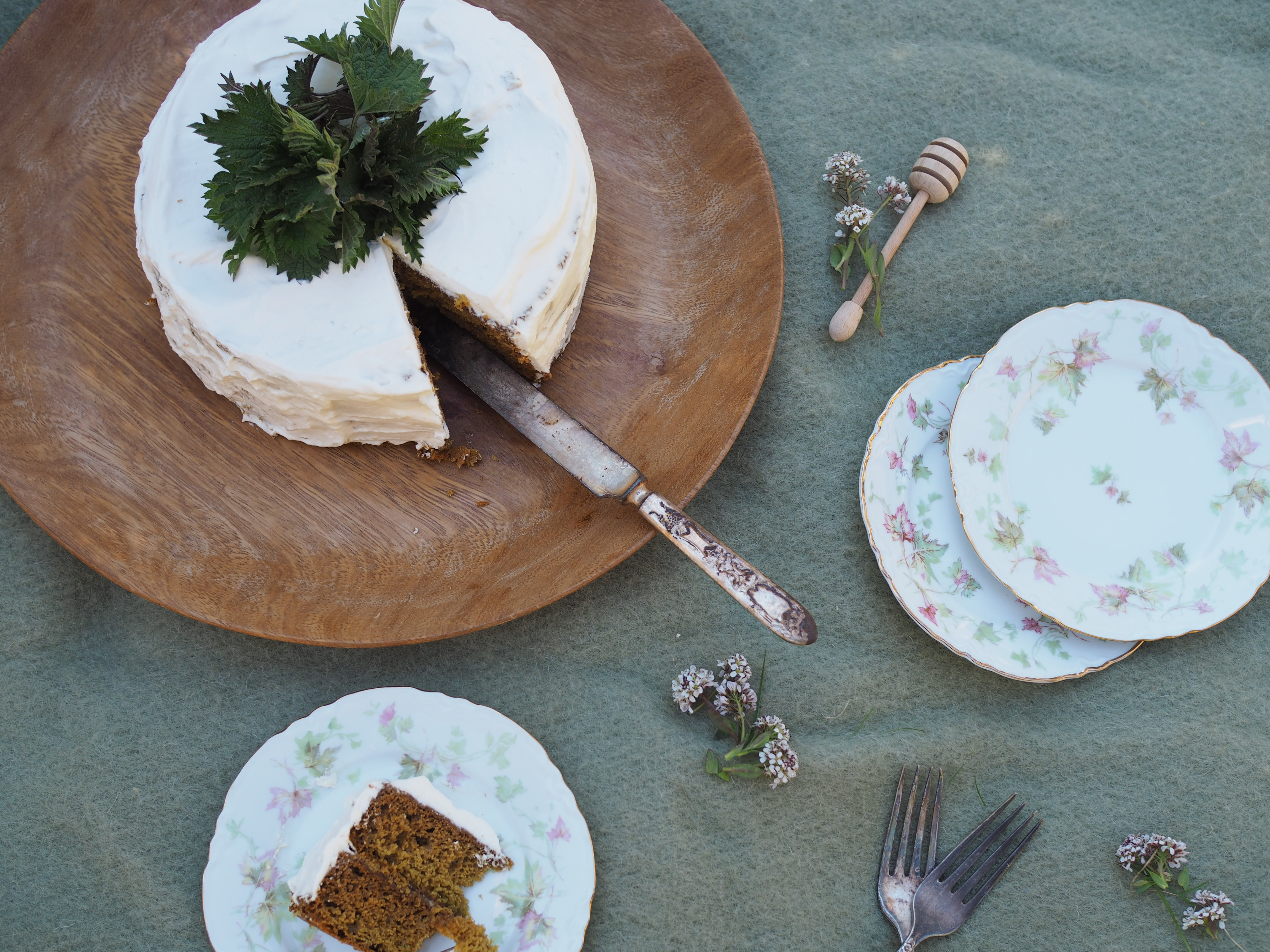
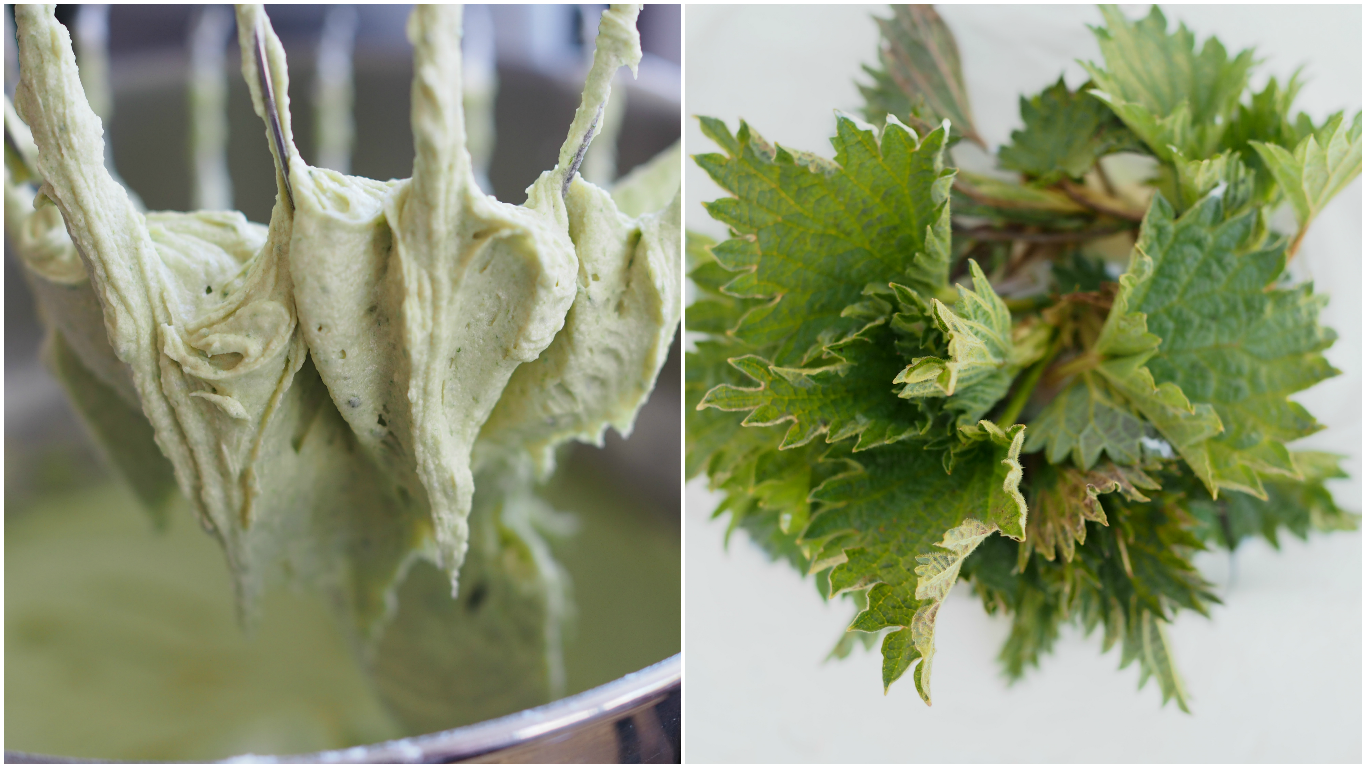 Nettle is one of many of the plants foraged here in Numedal and across parts of Norway where it grows wild. You might be invited over for a cup of nettle tea, or a bowl of nettle soup during May and early June, just before the young leaves begin to flower. I wanted to explore the taste spectrum of the nettle and try my hand at something a bit off the beaten track. Something sweet. Something rustic. Something timeless. So what better way to celebrate the return of nettles in the spring than with a celebratory cake.
Nettle is one of many of the plants foraged here in Numedal and across parts of Norway where it grows wild. You might be invited over for a cup of nettle tea, or a bowl of nettle soup during May and early June, just before the young leaves begin to flower. I wanted to explore the taste spectrum of the nettle and try my hand at something a bit off the beaten track. Something sweet. Something rustic. Something timeless. So what better way to celebrate the return of nettles in the spring than with a celebratory cake.
This nettle cake pairs incredibly well with the richness of honey and the light almond whipped cream frosting. It’s a cake that will impress, especially when you tell them that the star ingredient is that prickly weed growing in the yard and it’s packed full of nutrients. I shared this cake with friends and their young children and everyone gave it praise, especially the little ones as they enthusiastically gave their approval with a mouth full. It’s a down-to-earth cake; hearty and sweet and worth every little sting.
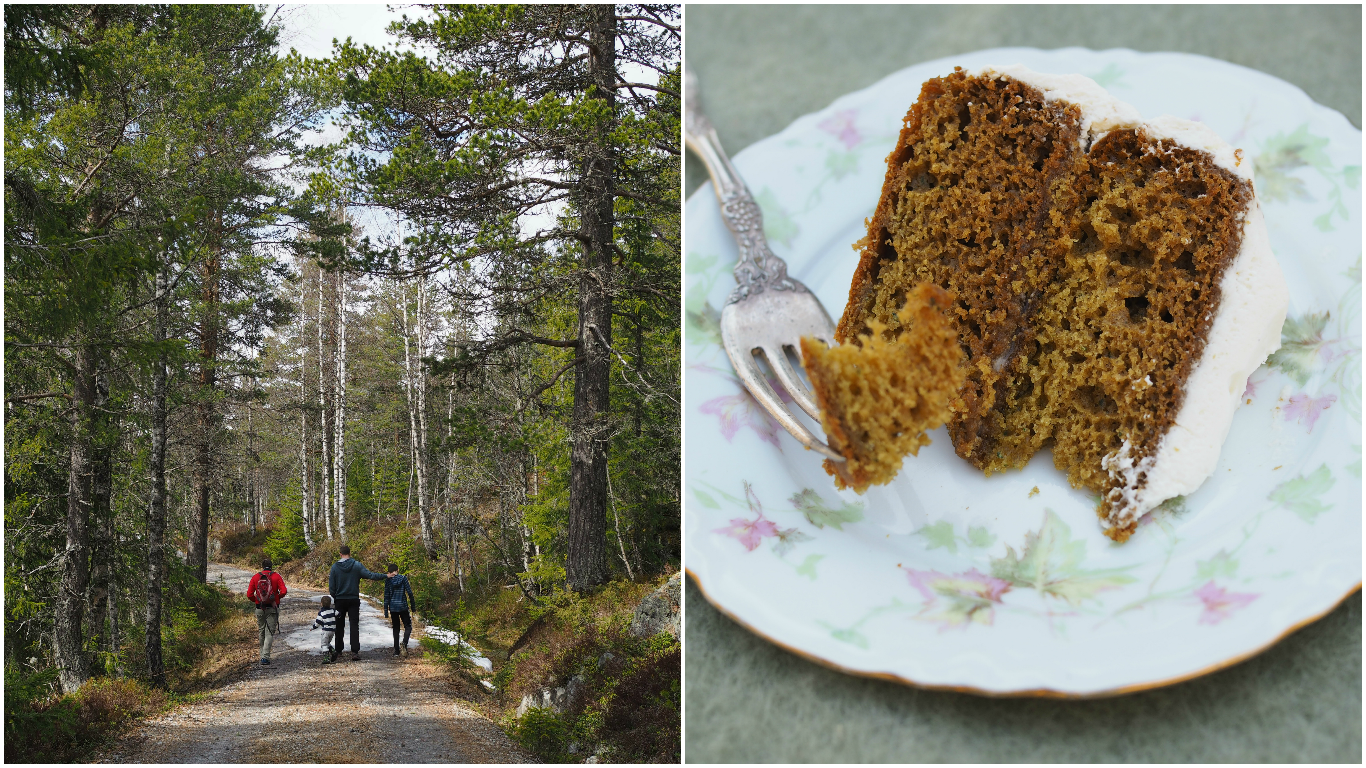
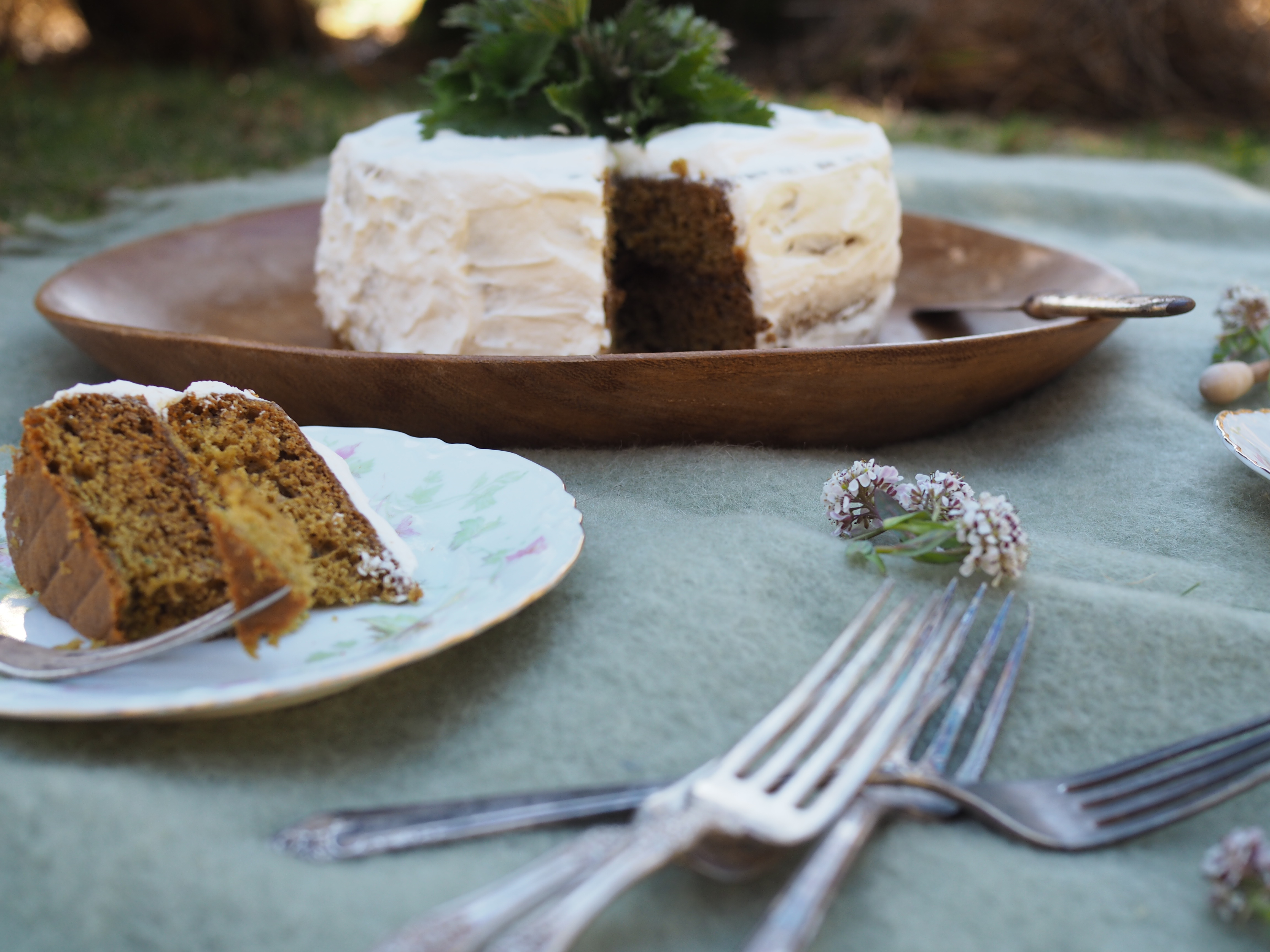
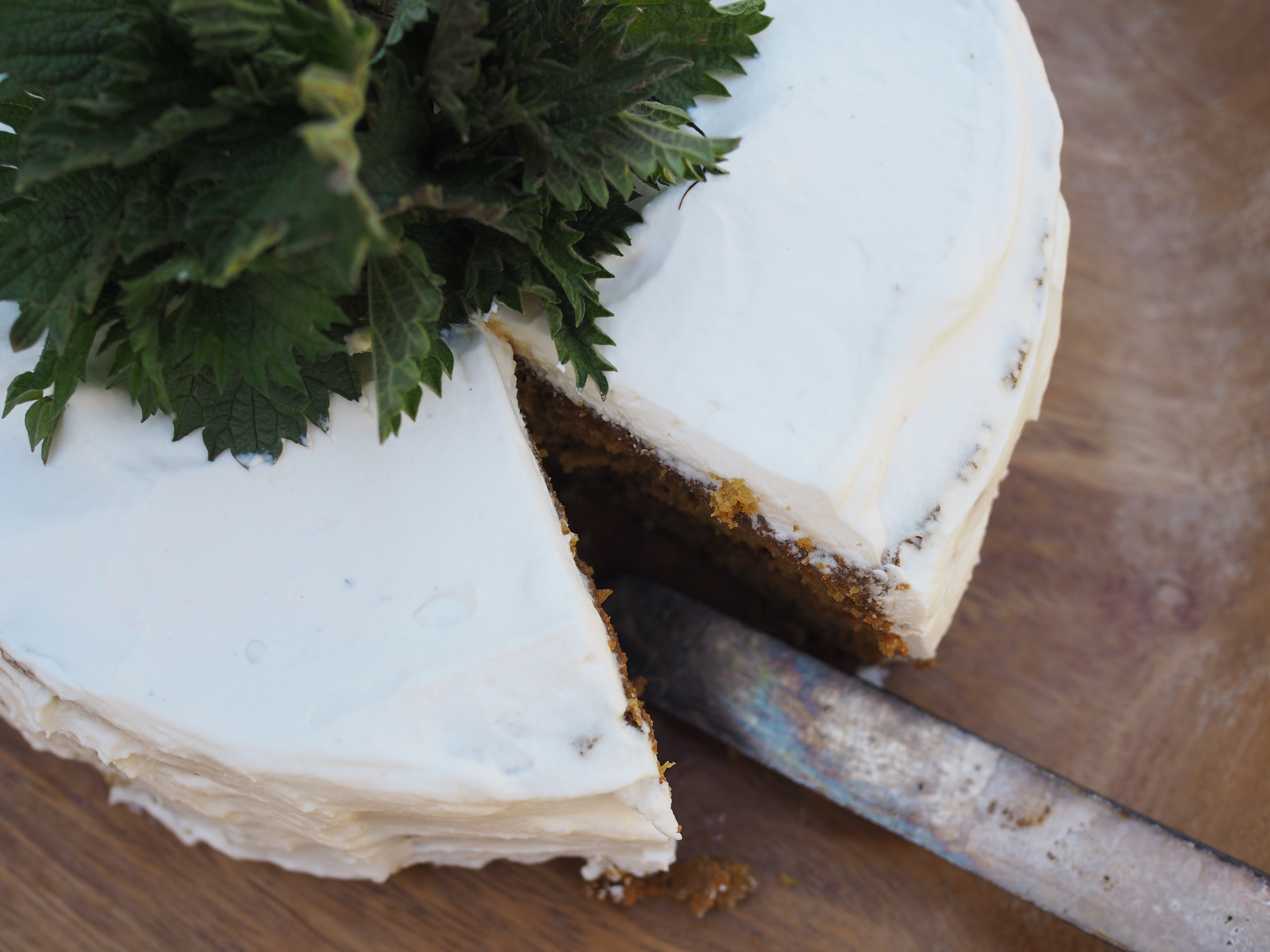
Nettle and Honey Cake with Almond Whipped Cream
This subtly sweet and down-to-earth cake is a great introduction to the world of the edible nettle and is possibly even better the next day once the almond whipped cream has had more time to soak into the cake.
Ingredients:
- 2 big handfuls of young nettle leaves, washed
- ½ cup (113 g) butter
- 1 cup (220 g) sugar
- 3 eggs
- ½ cup (125ml) honey
- 2 cups (300 g) flour
- 2 tsp baking soda
Frosting
- 3dl (1 ¼ cup) heavy cream
- 1 Tb sugar
- ¼ tsp almond extract
Preheat the oven to 150º C / 300° F. Grease and line two 8-inch (20 cm) round cake tins.
In a saucepan, boil water and add the nettles. Simmer for 4-5 minutes. Drain the nettles and blend with a hand blender. Set aside to cool.
In a food mixer, cream the butter and sugar together. Add the eggs, one at a time, and whip for a couple of minutes. Add the honey and nettle mixture and continue to whip until well mixed.
In a separate bowl, combine the flour and baking soda. Add this to the rest of the mixture and continue to mix until everything is well blended. The batter will be slightly stiff.
Pour the batter evenly into the two prepared cake tins. Bake for 30-35 minutes. Check the center of the cake with a toothpick after 30 minutes and continue baking if the toothpick does not come out clean. The cake has some spring to it and can be hard to predict if it is done just by touching the center. The toothpick will do the trick. When cooked, remove the cakes and set aside to cool for 10 minutes or so. After, place on a wire rack and cool completely.
In a bowl, add the heavy cream, sugar and almond extract and whip until it forms stiff peaks.
Assemble the cake by spreading some of the whipped cream over the top of one of the cakes. Place the other cake on top, and spread the rest of the whipped cream over the sides and top. (I dressed it up with nettles for the photos, but you can just serve it plain or with fresh fruits and/or edible flowers)
Serve immediately, or place in the refrigerator until ready to serve. Can stay for a couple of days in the refrigerator.
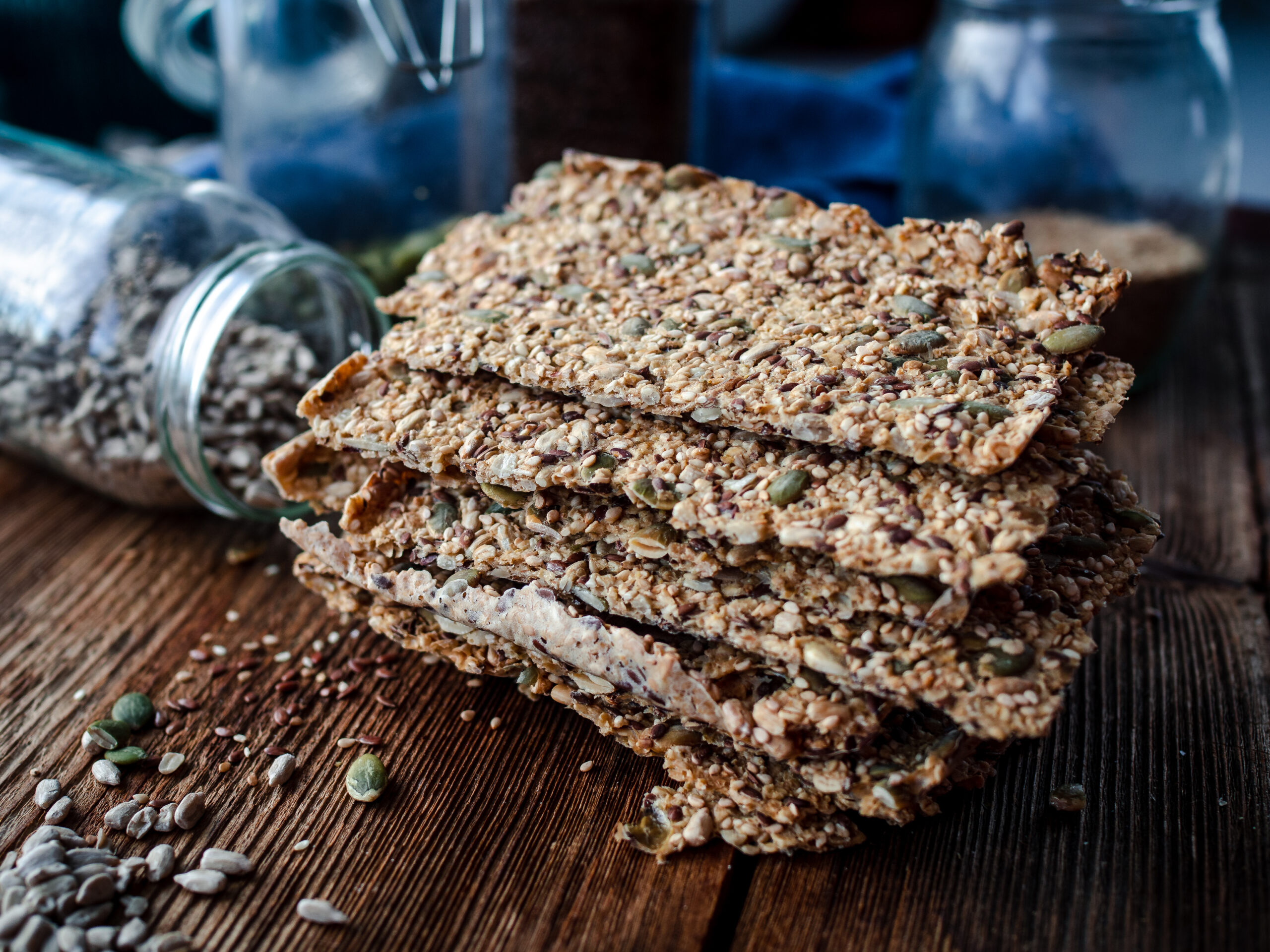
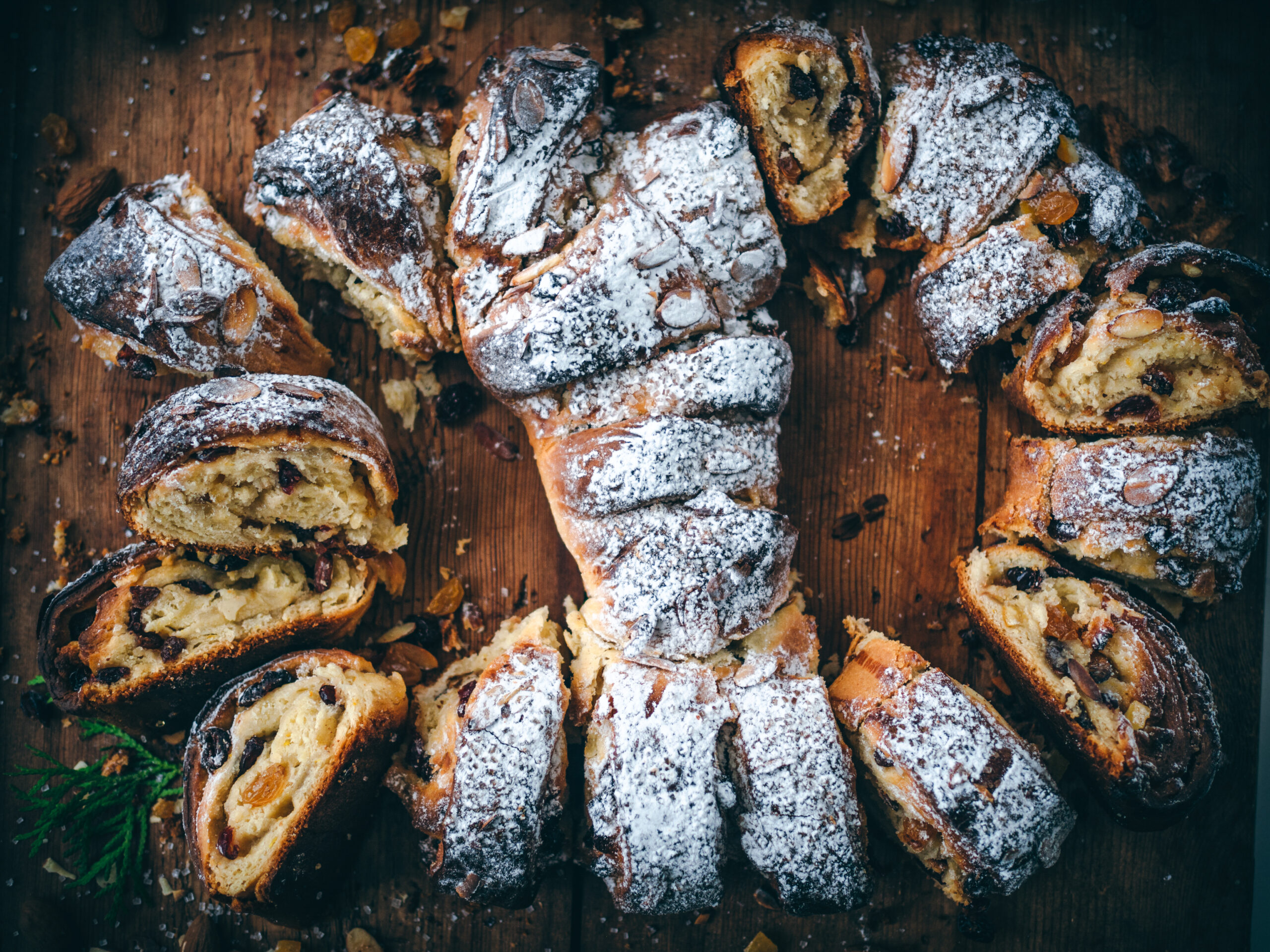
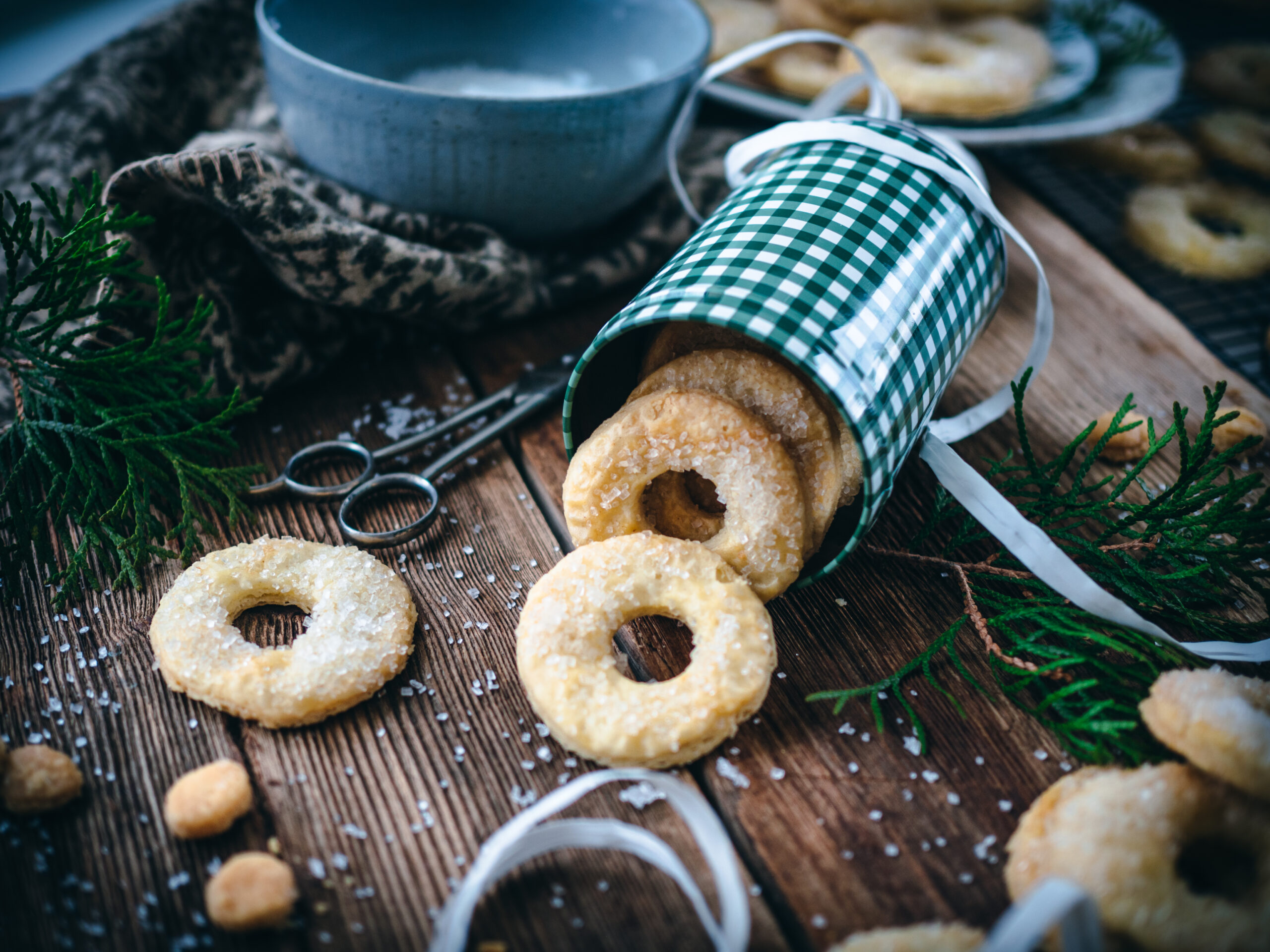
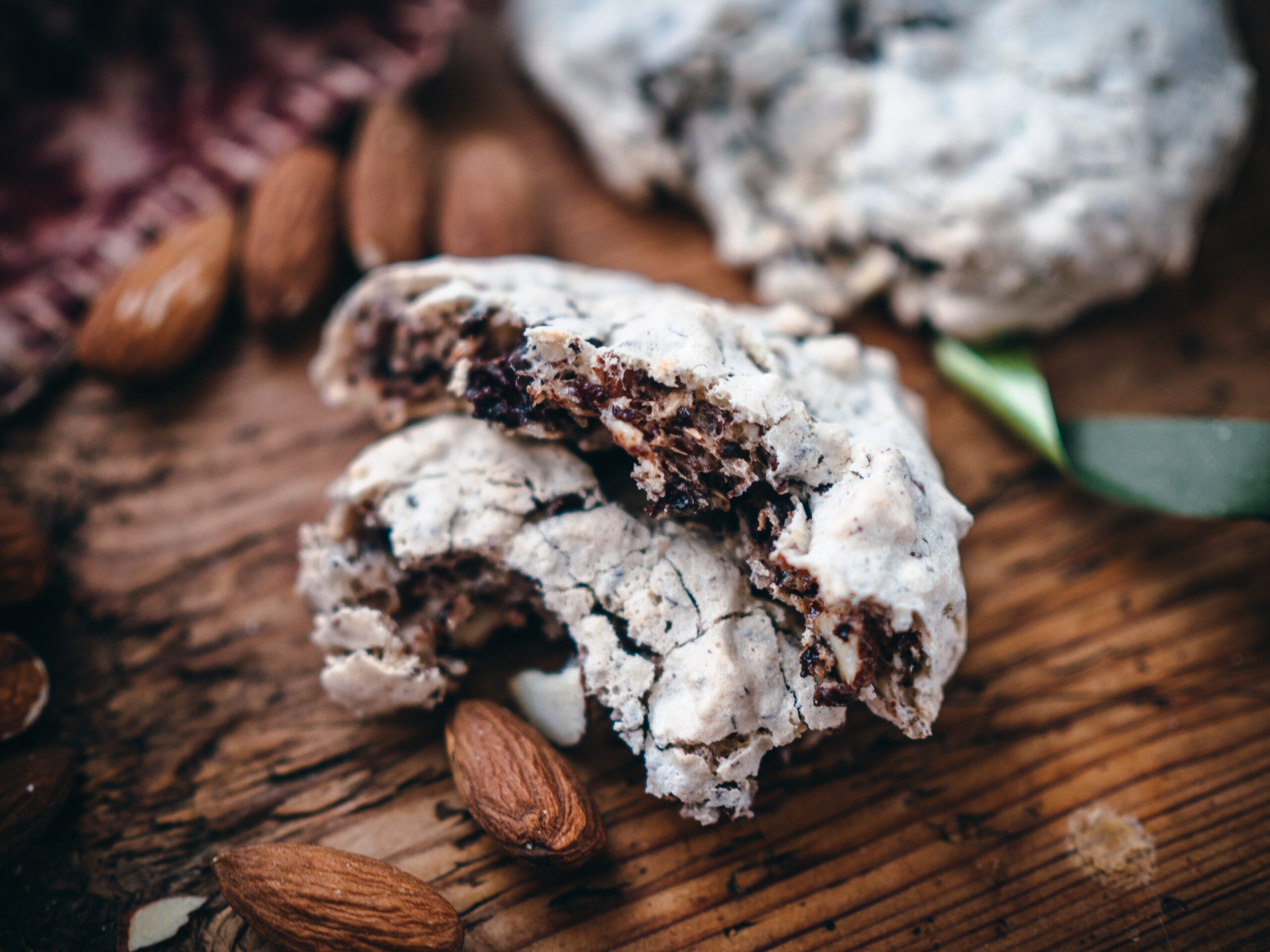

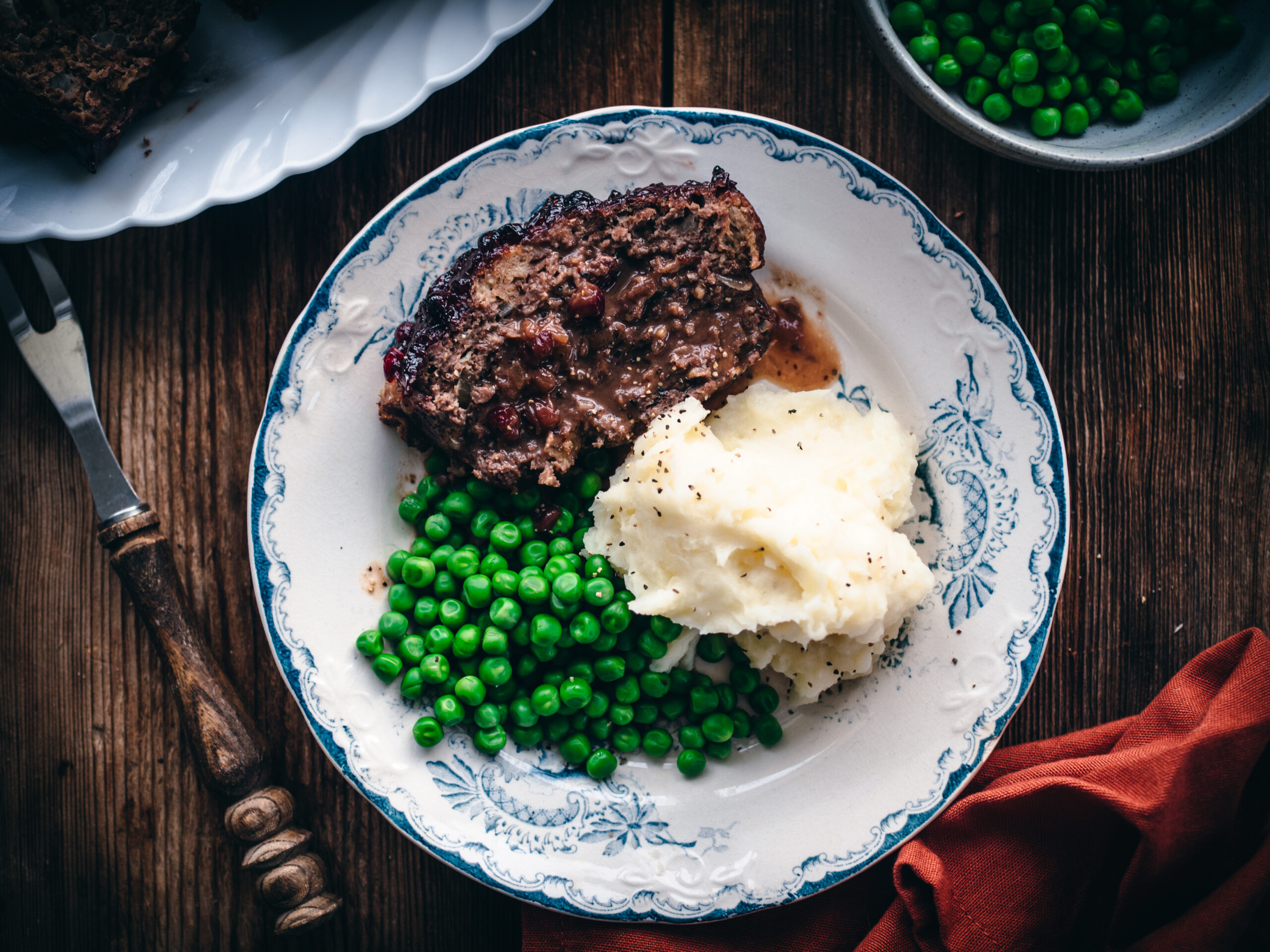
[…] For more springtime foraging recipes, check out my Nettle & Honey Cake (Brenneslekake) […]
[…] Interested in more edible ‘weeds’? Then check out my Nettle and Honey Cake. […]
This looks amazing! Any estimate of the quantity of nettles after blanching? (Weight or volume) I’m working with frozen blanched nettles from last year’s harvest.
Hi! I’ve only every made it from fresh nettle leaves, but if I had to guess, I would say perhaps around 1/2 cup blanched. Let me know how you get on!
I made this 2 years ago and don’t remember, but I just made it again with 1 cup blanched nettles and it worked great! Also added 1 tsp vanilla extract and 1/2 tsp salt. Baked it for 1 hour in a single 22cm pan (I don’t have two). Enjoying it with coffee, without the icing 🙂
So happy to hear this!
I’d love to try this beautiful recipe, since I already enjoy nettle tea every day… but I don’t have access to fresh nettles!
Do you think it would be possible to use the organic dried nettle leaves I use for my tea, brewing and blending them as directed?
Hi! That’s a great question. It should be ok to swap the fresh for dried, I just haven’t tried it before so I’m unsure of the amounts. Let me know how it turns out if you try!